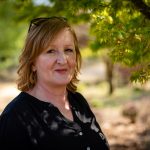In my post 7 Tips for Writing a Great Memoir, I advise ‘consider who you are writing for’. But what does that mean? This post aims to answer this question and provides some useful guidance on how to ensure your writing finds its readers.
Share this post in your favourite places

Where to start?
The first question to ask yourself is, what is your intention for your work? If you’re writing for the act of writing, or for therapy, for example, then the only audience member will be you and in this case your focus should probably just be on getting your words onto paper.
But if you are writing to have your work read by others, then your approach needs to be different. You have a message you want to convey and you’ll need to think much more carefully about how you execute it. Rather than writing to please yourself, you will need to put your reader first.

Why do I need to know my audience?
With all the amazing books out there, you need to convince people it’s worth reading your work because it contains something they’re going to find interesting. Think of it like selling a product in a crowded marketplace. If you are serious about getting your work read you need to know who your audience is and what they want.
In You Can’t Make This Stuff Up, Lee Gutkind writes:
‘Imagine that you walk around behind [them] and peer over his or her shoulder …Read what you’ve written from your reader’s perspective. Decide if it works for them—not you.’
How to do this? Create a reader persona.
Creating a reader persona
In its simplest terms, a reader persona is a character, a fictitious person who is your ideal audience member or members. You could go into great detail with this and create persona profiles with lists of attributes like what their age, gender, etc is, but it doesn’t need to be as complicated as that. Nicola Morgan writes:
‘The best way to understand your reader is read the same books. That way, you become an expert in what makes your reader tick, what works and what might not.’
Let’s look at a couple of examples to show what I mean. (I’m basing them on works of narrative nonfiction because that is my area of interest, but personas can equally be applied to fiction.)
Example One
You want to tell the story of your experiences working in medicine so you look at the market to see what other medical type memoirs there are. You find Trust Me I’m A Junior Doctor and This Is Going to Hurt as a couple of examples. Reading both of these gives you a good idea what readers of these might expect to see eg medical terminology, details of medical procedures, gallows humour, sadness and stories of hope. It would be safe to assume they will be looking for an insider view of what life is like working in hospitals and other medical institutions, perhaps to affirm their own experiences or to imagine how they might react in similar situations.
Hanging out in online book clubs or readers groups might also give you some more detailed information about the personal characteristics of them and you might discover that the people picking up those books are:
- 30 something junior doctors in a large NHS hospital
- Retired GPs
- Students embarking on their medical degree
Example Two
You are a midlife woman who is about to undertake a great physical challenge in response to a traumatic life event. During your research, you discover Raynor Winn’s The Salt Path and Cheryl Strayed’s Wild: A Journey From Lost to Found. You read both to get a feel for the structure of the book and the tone of the prose and then you read some online book reviews at your chosen online bookshop and discover their readers are:
- Women recovering from breast cancer
- Stroke survivors planning to climb a mountain
- People looking for inspirational stories
Of course, this isn’t an exact science and there will be readers who don’t fit into these categories. But in general, putting in the time to do some market research like this will pay dividends in helping you to work out who your audience is and what they are looking for.
Thinking about your readers whilst you are writing will help inform and shape your work and ultimately expand your audience.
What if you’ve already started writing or finished your first draft?
You can still follow the above tips to create your reader persona and then keep them in mind when revising your work.
I hope you’ve found this post useful and I’d love to have your thoughts. Please leave them in the comments below.
More resources
7 Tips for Writing a Great Memoir
Nicola Morgan- Writer’s Archive

Tracey Chick is a line and copyeditor specialising in historical fiction and narrative nonfiction.
She is a member of the Chartered Institute of Editing and Proofreading.
Visit her website at Tracey Chick, connect on Twitter at @WriterTjc, LinkedIn and Facebook.
Share this post in your favourite places!